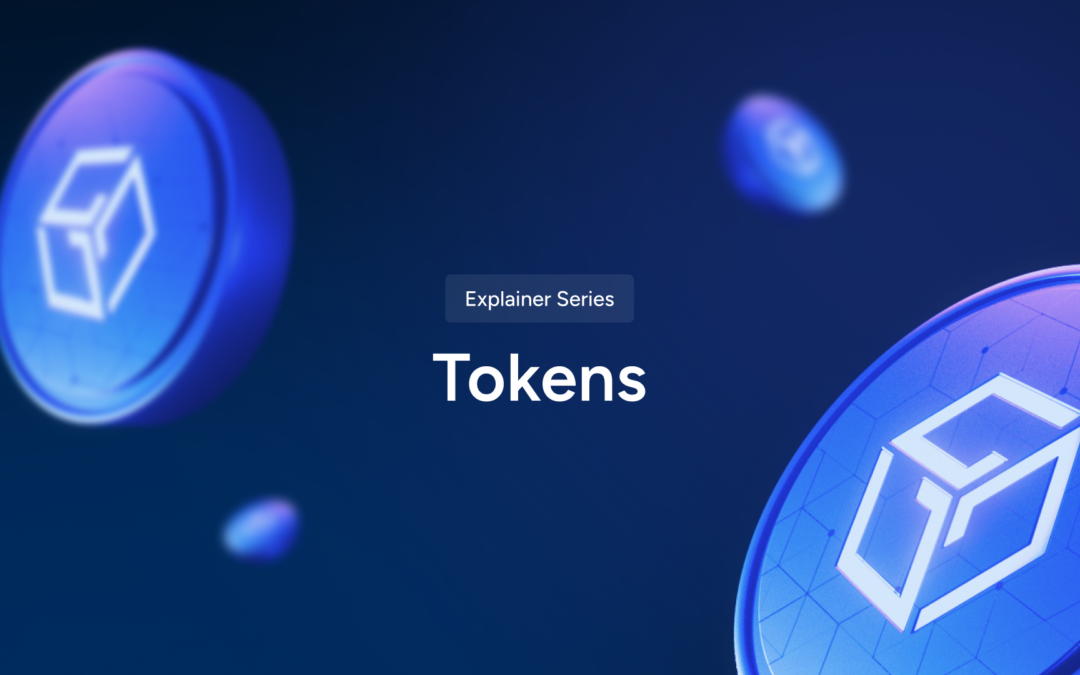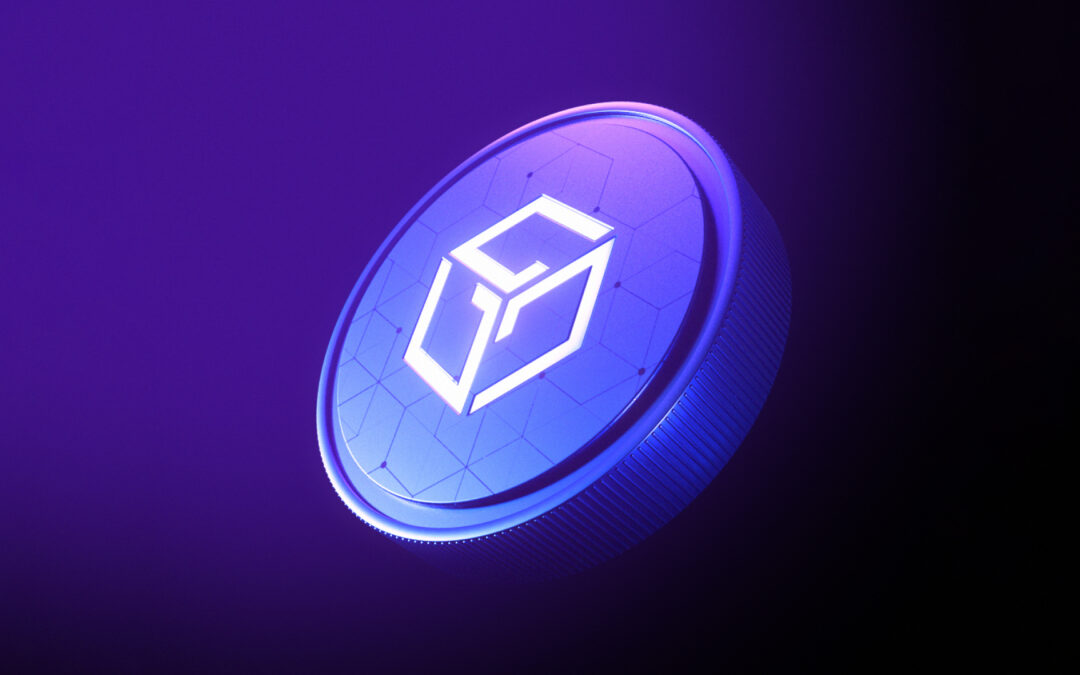
Understanding Tokens in the Web3 World
Tokens are fundamental components of the web3 ecosystem, revolutionizing how we interact with digital assets and decentralized applications (dApps). In simple terms, a token can be thought of as a digital representation of ownership or access rights to a certain asset or service, often facilitated by blockchain technology.
To better grasp the concept and importance of tokens in the web3 world, we’ll explore the different types of tokens and how they function within the GalaChain ecosystem.
What is a Token?
Imagine tokens as digital coupons or tickets. Just like a ticket grants you access to a concert or a coupon provides a discount at a store, tokens provide specific rights or access within the digital realm. They can represent various assets, from currencies to ownership rights, and can be transferred or exchanged on blockchain networks.
Origins and Etymology
The word “token” has a rich history and etymology, deeply rooted in the concept of representation. Its origins can be traced back to Old English and Germanic languages, where it was used to describe a sign or symbol that stands for something else.
Old English and Germanic Roots
The term “token” originates from the Old English word “tacen,” which means a sign, mark or evidence. This word itself is derived from the Proto-Germanic “taiknam,” which also denotes a sign or symbol.
Medieval Usage
In medieval times, a token often referred to physical objects like coins, vouchers or talismans, which were used to represent value or signify a promise or proof of authenticity. For example, merchants used tokens as a form of currency in trade, and tokens were also used in religious contexts as symbols of faith.
Modern Contexts
Over time, the use of tokens evolved but remained true to the idea of representation. In modern contexts before the advent of digital technology, tokens were still widely used in various forms such as subway tokens, arcade game tokens, membership tokens or game pieces, all serving as physical representations of access rights or value.
It’s interesting to consider the important role tokens have always played in gaming (player pieces, poker chips, Monopoly money, etc), especially when you consider that a large portion of today’s web3 world stemmed from the idea of gamification. This is why so many early web3 innovators like Gala used gaming as a way to express the meaning of web3 ideas like player ownership and reward economies.
The Concept of Representation
At its core, the concept of a token has always been about representation—one object standing in for another, often something more abstract like a promise, value or right. This foundational idea has seamlessly transitioned into the digital age, particularly within web3.
Contemporary Web3 Definitions
Today, tokens continue to embody the essence of representation:
Digital Representation of Assets
Utility tokens, security tokens and non-fungible tokens (NFTs) serve as digital representations of various assets, rights or ownership on the blockchain. For instance, an NFT represents ownership of a unique digital item, such as a piece of art or a game character.
Access and Governance
Crypto tokens can also provide access to services, enable transactions or even represent governance rights of decentralized platforms. For example, the popular Ethereum-based decentralized exchange protocol, Uniswap, allows holders of its UNI token to vote on ecosystem decisions such as proposed changes, funding allocations and more.
The core Gala ecosystem does not tie governance to ownership of the $GALA token, but to operation of Founder’s Nodes. As the community that powers the ecosystem, owners of Founder’s Node licenses are periodically given a chance to vote on important ecosystem decisions. As the Gala ecosystem continues to expand outward from its core entertainment brands of Games, Music and Film to greater decentralization, new opportunities to introduce governance will be explored.
Community governance is an important aspect of decentralization, one which many would argue is imperative to prevent centralized control. Even large centralized corporations have traditionally checked control of leaders via powers of a governing body such as a Board of Directors. For an ecosystem, platform or protocol to be truly decentralized, the people must call its shots to some degree.
Look for another article in the near future about the importance of governance in web3.
Staying True to the Original Meaning
The contemporary use of tokens in the Web3 ecosystem has remarkably stayed true to the original definitions. Just as tokens in ancient times represented physical or abstract concepts like value, promises or rights, modern digital tokens represent ownership, access and utility within a decentralized digital framework.
By maintaining this fundamental principle of representation, tokens in the web3 world not only preserve their historical essence but also extend their utility into the digital realm, enhancing the way we interact with technology and digital assets. This continuity underscores the timeless nature of tokens as symbols of representation, evolving yet fundamentally unchanged in their core purpose.
Types of Tokens
Tokens in the Web3 ecosystem are diverse and can be categorized into several types:
- Utility Tokens
- Security Tokens
- Non-Fungible Tokens (NFTs)
- Governance Tokens
Utility Tokens
Utility tokens are designed to provide access to a specific service or product within a blockchain-based platform. They are often used to pay for transactions, access features, or reward participants within the ecosystem.
Examples: $GALA, $MUSIC, $FILM
Within the Gala ecosystem, the $GALA token serves as a utility token. It is the core utility and gas token used for transactions, purchasing NFTs and rewarding Founder’s Node operators. For instance, gamers can use $GALA to buy in-game items, create tokens on GalaSwap and more.
“Security Tokens vs. Utility Tokens: A Concise Guide” –Blockchain Council 5/10/24
Security Tokens
Security tokens represent ownership in a real-world asset, such as shares in a company or real estate. They are subject to regulatory compliance and are designed to be investments. There are no security tokens in the Gala ecosystem.
The concept of security tokens can be applied in scenarios where investments in real-world assets are tokenized, providing holders with ownership stakes and potential dividends.
Examples: Blockchain Capital Fund (BCAP), INX Limited (INX)
Non-Fungible Tokens (NFTs)
NFTs are unique digital assets that represent ownership of a specific item or piece of content, such as art, music, or in-game assets. Unlike utility and security tokens, NFTs are not interchangeable due to their unique properties.
Example: Gala Music tracks, Champions Arena Champions, Gala Film Moments
Gala Music and Gala Games leverage NFTs to provide unique digital assets. For instance, musicians can release exclusive tracks as NFTs, granting ownership to their fans. Similarly, in Gala Games, players can own unique in-game items or characters, enhancing their gaming experience.
“What is an NFT? Non-fungible Tokens Explained” –Forbes 5/10/24
Governance Tokens
Governance tokens grant holders voting rights in the decision-making processes of a decentralized platform. They enable the community to participate in governance, proposing and voting on changes or upgrades.
Examples: Maker DAO (MKR), Compound decentralized lending protocol (COMP)
$GALA is primarily a utility token, but governance will play an increasingly important role in the Gala ecosystem as it moves toward greater decentralization over time. Currently, Founder’s Node operators are able to vote on certain important ecosystem decisions. Gala Music account holders can cast votes on new artists and tracks to be added next to the platform. While these democratization methods are not directly tied to the ownership of a token, they are important aspects of a decentralized community.
“What are governance tokens and how do they work?” –Cointelegraph 10/24/22
Importance of Tokens in Web3
Tokens are crucial in the Web3 ecosystem for several reasons:
Decentralization: Tokens facilitate decentralized governance and operations, reducing reliance on central authorities and minimizing the need for trust between parties.
Incentivization: They incentivize participation and contribution within the ecosystem, rewarding users, developers and node operators.
Interoperability: Tokens enable seamless interaction between different blockchain-based platforms and applications.
Ownership: NFTs and other tokens provide verifiable ownership of digital assets, enhancing the value and utility of these assets.
Tokens in the Gala Ecosystem
GalaChain already contains numerous tokens, especially since the GalaSwap Project Token Creation Tool has recently empowered anyone in the community with the ability to easily make a token for their own project.
Game Tokens
The Gala ecosystem features specific gaming reward tokens like Legends Reborn’s $TOLK, Mirandus’ $MTRM and Spider Tanks’ $SILK. These tokens serve as in-game currencies, rewarding players for their achievements and participation. They can be used to buy items, access special features, or trade within the games’ marketplaces.
$GALA as the Core Utility Token
The $GALA token is integral to the Gala ecosystem, acting as the primary medium of exchange and rewarding participants. It is used to power transactions on GalaChain, purchase NFTs and reward node operators who maintain the network’s infrastructure.
Here’s to a More Tokenized Future!
Tokens are the lifeblood of the web3 ecosystem, enabling decentralized applications, digital asset ownership, and community-driven governance. In the Gala ecosystem, tokens like $GALA, $TOLK, and $MTRM illustrate the diverse applications of tokens, from utility and rewards to unique digital assets. Understanding the different types of tokens and their roles helps us appreciate their significance in shaping the future of digital interactions.
Recent Explainer articles:
Cryptocurrency
Decentralization
NFTs
Tap into Tokenized Treasure on Telegram with Treasure Tapper!


